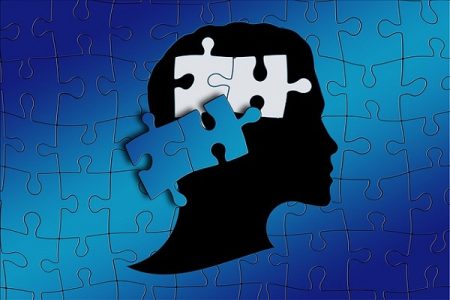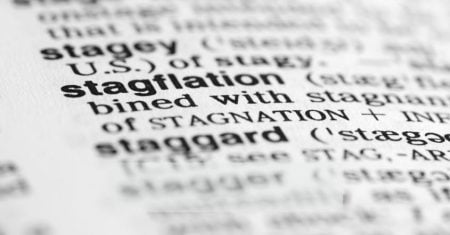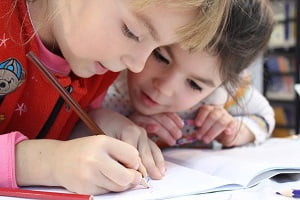Dyslexia and Attention-Deficit/Hyperactivity Disorder
- Updated on: Jul 11, 2024
- 5 min Read
- Published on Apr 23, 2021


What is dyslexia?
Dyslexia is a learning disability that is characterized by symptoms such as difficulty in reading, confusions in recognizing the words, problems with spelling, writing, and pronouncing words etc. There is no cure for this condition. It is a lifelong condition for which certain management options are available to ease the symptoms and improve chances of success in life. It affects individuals throughout their lives but its impact can change as a child grows in age. Symptoms of dyslexia may differ considerably in a child as compared to the symptoms in adults. It is considered a learning disability because it can make reading very difficult for a child which can affect academics of the child if proper care through special instructions, environment, methodologies, are not adopted.
What is attention-deficit/hyperactivity disorder (ADHD)
Attention-deficit/hyperactivity disorder (ADHD or AD/HD) is a common mental problem that mainly affects children, though it can affects adults also in some cases. It is usually identified when a child starts going to school and usually a teacher notices changed behavior such as disruption in the classroom or problems with schoolwork. It is more common among boys than girls.
Common signs and symptoms of ADHD are:
- Lack of attention – the child is not able to focus
- Hyperactivity – the child is hyperactive showing excess movement not fitting to the environmental setting
- Impulsive nature – for example acts hastily without thinking
According to available estimates, about 8.4 percent of children and 2.5 percent of adults suffer with ADHD.
The ADHD-Dyslexia Connection
ADHD is usually identified when the child goes to school. It is often identified the very first day in school. Dyslexia on the other hand remains undiagnosed for a longer period of time. It is often recognized when a child has spent a few years in school and reaches fourth or fifth grade and there is a shift from learning to reading. About 50-60 % of people with ADHD also have some type of learning disability such as dyslexia.
Differences and Similarities between dyslexia and ADHD
There are many things that are common in ADHD and Dyslexia, such as:
- information processing speed issues
- deficiency with working memory
- confusions in names
- trouble in writing
- messy handwriting
- reading and comprehension problems
- at high risk for self-esteem
- motor skills deficits, and
- cerebellar abnormalities, etc.
Often, these conditions are confused in the beginning at the time of diagnosis. Since the prevalence of both the conditions is also commonly observed together, this makes a correct and timely diagnosis even more difficult for doctors.
Here are listed some features that differentiate dyslexia from ADHD:
- Non-dyslexic ADHD children can read without any difficulty if their interest level is good, but their reading may be slow if they do are lacking interest in the reading material. Children with dyslexia on the other hand have a constant slow speed of reading and are poor at reading irrespective of their interest in the material that they read.
- ADHD symptoms are generally visible from day one in the school, whereas dyslexia is not well recognized until the child has spent a few years and there is a shift from learning to reading tasks.
- Students or children who have dyslexia but not ADHD usually have poor concentration and are unable to pay attention if the task involves reading, but can be very effective in paying attention and concentration if it does not involve reading. On the other hand, ADHD kids consistently have a low attention level in any event or task that is not interesting for them.
- In general, dyslexics are better at processing sounds than kids with ADHD.
- Children with dyslexia are poor in spelling, whereas non-dyslexic kids but with ADHD are usually not poor in spelling unless there is an impulsive action. If they are given time, they can improve spellings unlike dyslexics.
It should be understood that while there is an association between ADHD and dyslexia and both can occur together, but they do not cause each other.
Is It ADHD or Dyslexia – or Both?
It’s not always easy to tell whether the child has ADHD or dyslexia or both based on the observed signs. One can make a self diagnosis by looking at the common signs that differentiate both the conditions as mentioned above; however, one can make a difficulty in the diagnosis. You should connect with an expert if you notice any sign of dyslexia or ADHD as they can make a better diagnosis by evaluating levels of difficulty with reading and writing or verbal instructions of the child. In some cases, the child may have both conditions.
Many children suffer with both attention deficit hyperactivity disorder (ADHD) and some form of learning disorder such as dyslexia hand-in-hand. It is reported as many as one in four children with ADHD also have dyslexia, and about 15-40 percent of children with dyslexia also have ADHD. It therefore becomes important for parents and doctors to work together to manage both conditions at the same time.
ADHD and Dyslexia: Reaching a Diagnosis
The process of diagnosing the actual reason of certain types of behavior of a child could be lengthy as well as difficult. This may be more difficult in case of girls as they tend to remain silent rather than act out if they have ADHD.
You should connect with a child care specialist if you notice any signs of learning disability or ADHD. He or she may refer you to a specialist for neuropsychological testing or other forms of diagnosing these conditions.
In order to understand what disorder your child is suffering with or whether he or she has both, you will need:
- Inputs from the teachers of your child
- Evaluation of learning ability of the child
- Evaluation of the ADHD symptoms such as lack of attention /concentration etc
Possible Reasons for Overlap
According to Russell A. Barkley, clinical professor of psychiatry, Virginia Treatment Center for Children at Virginia Commonwealth University Medical Center, “some of the risk genes in one are showing up in the risk genes in another”. This indicates that “some shared genetic liability is likely related to the speed of reading processing and paying attention.” However, he further says that a person with dyslexia rarely has a relative with ADHD and vice versa; “it’s not as though one has a huge liability for the other,”
He also says it’s worth keeping something called “nonrandom mating” in mind. It’s a concept explaining that people tend to associate with, and ultimately mate with, people who have similar social and educational backgrounds. He does not call it as a definitive concept, but this may possibly explain as to why learning disorders are more common in people with ADHD.
Neurological studies about functional/anatomical differences in the brains
Researchers are trying to understand and define the exact changes that occur in human brain and cause AD/HD and dyslexia. Pathologic studies of brains of some people with dyslexia have been conducted after their death. Some changes in the brains of people with and without learning disabilities have been identified, but no consistent pattern is reported to conclude about a possible reason of these conditions. Recently better techniques have been developed, which allows testing and scanning of human brains in living persons such as imaging studies and physiologic studies. While interesting insights have been obtained from these studies but a definitive answer regarding the actual causative mechanisms of these disorders is yet to be identified.












